Telecommunications Products (1194.23)
Guide Index
Updated: June 21, 2001
How does section 508 relate to the Telecommunications Act?
Section 255 of the Telecommunications Act of 1996 requires phone manufacturers
and telecommunications service providers to make their products accessible when
readily achievable to do so. A TTY, for example, is considered
customer premises equipment, subject to section 255 provisions. The Access Board
wrote guidelines for section 255 known as the Telecommunications
Act Accessibility Guidelines (36 CFR, Part 1193). The FCC (Federal Communications Commission)
used the guidelines as a basis for developing a report
and order under section 255. The Access Board also incorporated the guideline’s
language in the 508 standard. Using consistent language in both documents enables companies to develop products
that satisfy manufacture’s design requirements as well as Federal agencies’
procurement requirements.
(a) Telecommunications products or systems which provide a function allowing voice
communication and which do not themselves provide a TTY functionality shall provide a standard non-acoustic
connection point for TTYs. Microphones shall be capable of being turned on and off to allow the user to
intermix speech with TTY use.
What is a TTY?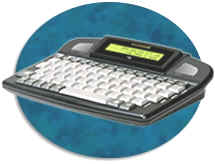
A TTY (Teletypewriter) is a data terminal that allows a person with a
communication disability to use the telephone. TTYs traditionally have been
stand-alone devices with a keyboard and an electronic display for reading text.
TTYs send and receive tones which are converted to text. TTYs transmit and
receive baudot code at a rate of 45.5 baud. Baudot refers to the code made from
bits of electronic information. Baudot is considered to be an antiquated code.
Baud refers to the speed at which data can be transmitted. Some TTYs may
transmit at a faster speed using proprietary protocols or ASCII. ASCII
(American Standard Code for Information Interchange) is a more conventional
code, commonly used by computers and other devices that transmit data.
It is possible to enable some computers to function as TTYs if
appropriate communication software (and sometimes a different modem) is
installed. Some TTYs can connect directly to the phone or phone line, thus
reducing the possibility of noise interfering with the data. Depending on the
type of phone, a TTY might connect via a standard RJ-11 phone jack or a 2.5 mm
audio jack. A variety of TTY styles exist that include models without acoustic
coupling ability and models without keyboards. People select and use TTYs
differently depending on their communication preferences and the nature of
their disabilities. Basic information on how to use a TTY can be obtained here.
What is VCO and HCO?
VCO is "voice carry over" and HCO is "hearing carry over". These terms refer
to strategies for using TTYs. VCO allows people who are hard of hearing or oral
deaf (deaf with intelligible speech) to use a TTY without typing. They only
use the TTY for reading during the inbound direction of the call. They talk
to their party by speaking into a microphone. Similarly, HCO allows a person
with a speech disability to hear a response from their party directly. These
options are often used in conjunction with a relay service.
 What is a relay service?
What is a relay service?
A telecommunications relay service (TRS) is essentially a telephone
interpreting service for people with communication disabilities. It enables a
TTY user to converse with a non-TTY user. Relay service operators are called
Communication Assistants (CAs) and serve as third parties to facilitate
conversations - by typing or speaking information as appropriate. Relay
services are available without charge 24 hours per day. These and other TRS
provisions are mandated under Title IV of the Americans with Disabilities Act.
An FCC report
and order mandates 7-1-1 as a toll-free number to use in accessing a relay
service. The Federal Relay
Service is one of several relay services available throughout the country.
Why is a non-acoustic connection point needed for TTYs?
Traditionally, people with communication disabilities used a TTY by placing
a telephone handset in an acoustic modem on top of the TTY. Some manufacturers
reduced the size of their TTY by removing the acoustic modem, thus requiring
the TTY to connect directly to a telephone or wall jack. Therefore, if a new
phone system has hardwired cords with no port for direct connection, then a
direct connect TTY cannot be used at that phone and the phone will be considered
non-conforming with this section 508 provision.
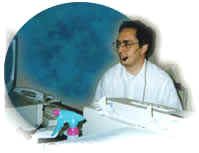 Why
must phone systems be capable of intermixing speech and TTY tones and why must users be able to turn
microphones on and off?
Why
must phone systems be capable of intermixing speech and TTY tones and why must users be able to turn
microphones on and off?
This provision supports VCO and HCO. People with communication
disabilities have reported instances in which they connected a TTY to a
cellular phone, which resulted in a deactivation of the telephone’s
microphone. In those cases, there was no way to talk into the phone (no way to
turn the microphone on). This is frustrating to people with a hearing
disability and intelligible speech who prefer to talk instead of type.
People who are deaf and use the TTY for both typing as well as reading would
have less of a problem with a connection that disables the microphone. However,
even they would be concerned if the phone was disabled to a point where it was
unable to transmit tones for responding to interactive telephone response systems.
TTY signals are not the same as "touch tone" sounds, and some TTYs may not readily
make the necessary tones.
On the other extreme, some TTY-phone set-ups keep a microphone on
throughout the entire conversation (never toggling it off). This can cause a
problem if the microphone picks up extraneous noise during the data reception
mode and results in errors.
Do TTYs work with digital phones?
At this time, TTYs do not work reliably with most digital cellular phones.
The industry is working toward a solution on this matter through an FCC
order which set a deadline of June 30, 2002 for wireless providers to be
able to transmit 911 calls made from TTYs.
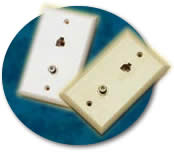 With
regard to landline phones, most digital phones from offices or hotels will transmit
TTY signals. If a TTY is use in an acoustic mode, then it does not matter whether
it is being used with analog or digital phones. However, direct-connect TTYs
should only be connected to analog phones to prevent damage to the TTYs. TTYs
use analog plugs. Users may experience some confusion in determining whether
a phone is analog or digital because of variances in the jacks. Digital jacks
are often larger than standard RJ-11 analog plugs, but sometimes they are the
same size. Finally, it is important that digital systems enable TTY signals
to come out of the system undistorted if signals are compressed along the way.
With
regard to landline phones, most digital phones from offices or hotels will transmit
TTY signals. If a TTY is use in an acoustic mode, then it does not matter whether
it is being used with analog or digital phones. However, direct-connect TTYs
should only be connected to analog phones to prevent damage to the TTYs. TTYs
use analog plugs. Users may experience some confusion in determining whether
a phone is analog or digital because of variances in the jacks. Digital jacks
are often larger than standard RJ-11 analog plugs, but sometimes they are the
same size. Finally, it is important that digital systems enable TTY signals
to come out of the system undistorted if signals are compressed along the way.
Back
(b) Telecommunications products which include voice communication functionality shall support all
commonly used cross-manufacturer non-proprietary standard TTY signal protocols.
How might telephone systems affect TTY signals?
Some systems compress or alter transmissions, including TTY audio
signals, in such a manner that the signals are not decoded properly. This
provision is consistent with language in theTelecommunications
Act Accessibility Guidelines.
What communication protocols are used by TTYs?
TTYs transmit in Baudot code at a rate of 45.5 baud. Products would need
to match this protocol to be considered "TTY compatible." A standard was
published for TTYs on June 23, 2000, which is available from the Telecommunications
Industry Association. Under 508, this is the protocol which must be retained as TTY
signals pass through phone systems.
Some TTYs also include the optional ability to connect at a rate of 300
baud ASCII, which enables them to communicate with some computers or other TTYs
with the same protocol. These two codes (300 baud ASCII and 45.5 baud
Baudot) are considered non-proprietary. Equipment that contains a v.18 chip will enable
transmission in many protocols including these two. That chip is based on an international standard.
Some TTY manufacturers developed proprietary protocols that enable TTYs
to communicate in Baudot at a higher rate. TTY users will see a benefit in
using proprietary protocols only when communicating with other users who have
products with the same protocol. The 508 standard does not require support for
proprietary protocols.
Back
(c) Voice mail, auto-attendant, and interactive voice
response telecommunications systems shall be usable by TTY users with their
TTYs.
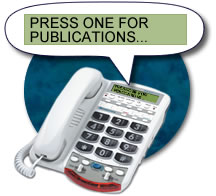 What difficulties have TTY experienced with
interactive voice response systems (IVRSs)?
What difficulties have TTY experienced with
interactive voice response systems (IVRSs)?
IVRSs include a variety of systems such as voice mail, recordings that
require selecting a department you wish to connect to and job line
announcements. Due to a hearing disability, many TTY users cannot understand
prompts indicating which phone buttons to push when encountering IVRSs. Often
when calling through relay services, TTY users are not given enough time to
respond and get timed-out by the IVRS. Auditory information when typed to a TTY
user via relay may not include necessary spacing or punctuation to help a
consumer understand sections of what is being conveyed. TTY users have discovered
that some voice mail systems corrupt TTY data left in voice mail boxes.
What does this provision require?
This provision is a performance requirement. It does not require phone
systems to provide voice to text conversion capabilities. IVRS products have
been available for over a decade which provide TTY users all of the same
functions and information as non-TTY users, such as reading streaming text,
leaving messages, and managing personal voice mail. This software should not be
confused with other software on the market that is designed to allow computers
to transmit and receive TTY code for live communication.
Back
(d) Voice mail, messaging, auto-attendant, and interactive voice
response telecommunications systems that require a response from a user within a
time interval, shall give an alert when the time interval is about to run out,
and shall provide sufficient time for the user to indicate more time is required.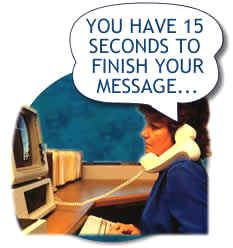
Why is an alert necessary?
This provision was included to serve the needs of people, such as those
with cognitive or dexterity disabilities, who may require additional time to
respond to the prompts of an interactive telephone response system in order to
avoid getting disconnected prematurely. The provision does not specify what the
alert could sound like or exactly how much additional time would be sufficient,
as those factors vary. This provision is identical to section 1194.22(p).
Back
(e)Where provided, caller identification and similar
telecommunications functions shall also be available for users of TTYs, and
for users who cannot see displays.
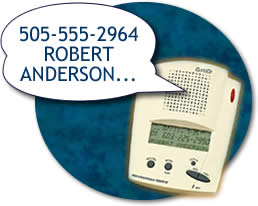 What
types of challenges have people with disabilities experienced with information
displayed on phones?
What
types of challenges have people with disabilities experienced with information
displayed on phones?
Some phones have an LCD (liquid crystal display) window that shows
Caller ID or other functions of the phone. People with visual or other
disabilities may be unable to read the display. Talking Caller ID would be one
means of making that information available in an alternate format.
Receiving this information has been a problem in the past for TTY users
who were forced to use an analog phone and line that bypassed the office
digital system. This will no longer be a problem with new 508 compliant systems
that will support TTY requirements.
Back
(f) For transmitted voice signals,
telecommunications products shall provide a gain adjustable up to a minimum of
20 dB. For incremental volume control, at least one intermediate step of 12 dB
of gain shall be provided.
How are volume controls affected by this provision?
If a volume control (usually a calibrated wheel or slide) is provided
that allows a user to set the level anywhere from 0 to the upper requirement of
20 dB, there is no need to specify an intermediate level. If a stepped volume
control is provided (usually through pressing a button repeatedly), one of the
intermediate levels must provide 12 dB of gain.
How is this provision related to ANSI standards and ADA Accessibility Guidelines?
This provision is consistent with the 1998 American National Standards
Institute (ANSI) A117.1 document, "Accessible and Usable Buildings and
Facilities." ANSI is a voluntary standard-setting body which issues
accessibility standards that become incorporated into the nation's model
building codes. This standard is consistent with the Telecommunications Act
Accessibility Guidelines and proposed revisions to the ADA and Architectural
Barriers Act Accessibility Revised Guidelines.
Back
(g) If the telecommunications product allows a user to adjust the receive volume, a function shall be provided to
automatically reset the volume to the default level after every use.
Why is this provision necessary?
This is a safety feature to protect people from damaging their hearing,
which might occur if they answer a telephone with the amplification
accidentally turned too high.
How does it relate to other accessibility guidelines and rules?
The provision is adopted from the ADA
Accessibility Guidelines (ADAAG), where it applies to public phones used
by many people. The FCC's Part 68 rules requires an automatic reset when the
phone is hung up if the volume exceeds 18 dB gain. To provide the ability to
override the reset function would require a waiver from the FCC.
Back
(h) Where a telecommunications product
delivers output by an audio transducer which is normally held up to the ear, a
means for effective magnetic wireless coupling to hearing technologies shall be provided.
 What
is hearing aid compatibility (HAC)?
What
is hearing aid compatibility (HAC)?
HAC commonly refers to magnetic leakage around a telephone receiver.
Hearing aid users desire a phone that emits such a magnetic field because it
enables them to listen through a phone handset held up to their ear without
getting an annoying squealing sound (acoustic feedback). They accomplish this
by turning off their hearing aid microphone and listening "inductively" (via magnetism).
Who benefits from products with wireless magnetic coupling?
Hearing aid users (and their representative associations) have been the
primary advocates for hearing aid compatibility and are the most common
beneficiaries. However, only hearing aids with a telecoil, also known as a
t-coil or telephone switch, can pick-up sound inductively. In addition,
cochlear implant users, who have an optional t-coil inserted in an ear-level
speech processor, can listen inductively.
What types of products can be made hearing aid compatible?
In addition to HAC telephone handsets, HAC telephone headsets are now
available. Note that this provision does not require a product to fit
comfortably, nor does it address the problem of interference to hearing aids.
(People with over-the-ear hearing aids often find that headsets do not direct
sound into their hearing aid very well, even if the headset is HAC.)
How does this 508 provision relate to other public policies?
This standard is consistent with language in the Telecommunications Act
Accessibility Guidelines.
Back
(i) Interference to hearing technologies
(including hearing aids, cochlear implants, and assistive listening devices)
shall be reduced to the lowest possible level that allows a user of hearing
technologies to utilize the telecommunications product.
Why is this provision necessary?
This provision largely grew out of complaints about digital cellular
phones by hearing aid users. Some hearing aid users heard a humming sound
coming from the phone and this interfered with the ability to hear the
conversation. This problem existed for both hearing aid users with t-coils as
well as those without t-coils. See discussion of provision (h) (previous) for
an explanation of a t-coil.
Who and what does the provision apply to?
This provision was carefully worded so that it could apply to listening
technologies other than hearing aids, such as cochlear implants and assistive
listening systems. In addition, although digital cellular phones were
identified as one source of interference, there may be other electronic and
information technologies that cause interference.
How can interference be determined?
The ANSI/IEEE C63.19 Standard, available from the American
National Standards Institute, can be used to assess electromagnetic
characteristics of hearing aids and wireless phones for the purpose of
determining compatibility. The FCC, consumer groups and the telecommunications
industry are now discussing plans for educating the public about this cell
phone/hearing aid compatibility standard.
Back
(j) Products that transmit or conduct
information or communication, shall pass through cross-manufacturer,
non-proprietary, industry-standard codes, translation protocols, formats or
other information necessary to provide the information or communication in a
usable format. Technologies which use encoding, signal compression, format
transformation, or similar techniques shall not remove information needed for
access or shall restore it upon delivery.
What types of products does this provision apply to?
This provision applies to any technologies involved with the
transmission of information, such as televisions and DVD players. People who
depend on closed captioning discovered that sometimes they would miss captions
if they saw a show on cable as opposed to receiving the same show through other
broadcast modes. Closed captioned information is usually included in portions
of a video signal not seen by users without decoders or who have turned off or
disabled the captioning. This issue applies to retaining audio description
information as well. This provision prohibits products from stripping out such
information or requires the information to be restored at the end point. The
provision was written broadly enough to ensure that it will apply to evolving
technologies.
Back
(k) Products which have mechanically
operated controls or keys, shall comply with the following:
(1) Controls and keys shall be tactilely discernible
without activating the controls or keys.
(2) Controls and keys shall
be operable with one hand and shall not require tight grasping, pinching, or
twisting of the wrist. The force required to activate controls and keys shall
be 5 lbs. (22.2 N) maximum.
(3) If key repeat is supported, the delay
before repeat shall be adjustable to at least 2 seconds. Key repeat rate shall
be adjustable to 2 seconds per character.
(4) The status of all
locking or toggle controls or keys shall be visually discernible, and
discernible either through touch or sound.
What products are generally covered under this provision?
This provision only applies to products that have mechanically operated
controls or keys, such as standard telephone keypads and computer keyboards. It
is not intended to apply to touchscreens.
What is meant by 'tactilely discernible'?

Individual keys must be identifiable and distinguishable from adjacent
keys by touch. Compliance with this provision can be accomplished by using
various shapes, spacing, or tactile markings. The normal desktop computer
keyboard, for example, would meet this provision because the tactile marks on
the "j" and "f" keys permit a user to locate all other keys tactilely. Many
phones also have a raised dot on the number 5 button, enabling them to orient
their fingers around the 12 keys. In addition, the physical spacing of the
function, "numpad" and cursor keys make them easy to locate by touch.
Because touch is necessary to discern tactile features, this provision
requires keyboards to enable touch that does not automatically activate a
function based on mere contact. Fortunately most keyboards require some
pressure on individual keys in order to enable a keystroke.
However, "capacitance" keyboards would not meet this provision because
they react as soon as they are touched and have no raised marks or actual keys.
They may not react at all when touched by persons with prostheses. A "membrane"
keypad with keys that must be pressed can be made tactilely discernible by
separating keys with raised ridges so that individual keys can be distinguished
by touch.
What is meant by "status of controls" and
why do people need that information?
This provision requires the status of toggle controls, such as the "caps
lock" or "scroll lock" keys to be identifiable by either touch or sound, in
addition to visual means. For example, adding audio patterns, such as ascending
and descending pitch tones that indicate when a control is turned on or off,
would alleviate the problem of a person who is blind inadvertently pressing the
locking or toggle controls. Also, buttons which remain depressed when activated
and switched with distinct positions may meet this provision.
What does "key repeat" mean?
This provision addresses a challenge encountered by some people with
fine motor coordination difficulty. Sometimes they accidentally press a key
several times when intending to hit it only once. This could potentially result
in the same character displaying several times on the screen. Some systems do
not support key repeat. However, where key repeat is provided, this provision
requires the repeat to be adjustable. Specifically, the delay must be
adjustable for a length of time that is no greater than 2 seconds between
repeats.
How will individuals with disabilities benefit
from the requirement enabling operability without tight grasping, pinching,
twisting or pressure?
Individuals with tremor, cerebral palsy, or other
disabilities may have difficulty operating systems which require fine motor control,
a steady hand, or two hands to be used simultaneously for operation. Individuals with
high spinal cord injuries, arthritis, and other conditions may have difficulty operating controls which
require significant strength. The standard limits the force required to five
pounds and is based on section 4.27.4 of the ADA
Accessibility Guidelines, codified as the ADA Standards for Accessible
Design as part of the Department of Justice’s regulation implementing
title III of the ADA at 28 C.F.R. pt. 36, Appendix A. This provision is also
consistent with the Telecommunications Act Accessibility Guidelines.

 What is a relay service?
What is a relay service? Why
must phone systems be capable of intermixing speech and TTY tones and why must users be able to turn
microphones on and off?
Why
must phone systems be capable of intermixing speech and TTY tones and why must users be able to turn
microphones on and off? With
regard to landline phones, most digital phones from offices or hotels will transmit
TTY signals. If a TTY is use in an acoustic mode, then it does not matter whether
it is being used with analog or digital phones. However, direct-connect TTYs
should only be connected to analog phones to prevent damage to the TTYs. TTYs
use analog plugs. Users may experience some confusion in determining whether
a phone is analog or digital because of variances in the jacks. Digital jacks
are often larger than standard RJ-11 analog plugs, but sometimes they are the
same size. Finally, it is important that digital systems enable TTY signals
to come out of the system undistorted if signals are compressed along the way.
With
regard to landline phones, most digital phones from offices or hotels will transmit
TTY signals. If a TTY is use in an acoustic mode, then it does not matter whether
it is being used with analog or digital phones. However, direct-connect TTYs
should only be connected to analog phones to prevent damage to the TTYs. TTYs
use analog plugs. Users may experience some confusion in determining whether
a phone is analog or digital because of variances in the jacks. Digital jacks
are often larger than standard RJ-11 analog plugs, but sometimes they are the
same size. Finally, it is important that digital systems enable TTY signals
to come out of the system undistorted if signals are compressed along the way. What difficulties have TTY experienced with
interactive voice response systems (IVRSs)?
What difficulties have TTY experienced with
interactive voice response systems (IVRSs)?
 What
types of challenges have people with disabilities experienced with information
displayed on phones?
What
types of challenges have people with disabilities experienced with information
displayed on phones? What
is hearing aid compatibility (HAC)?
What
is hearing aid compatibility (HAC)?